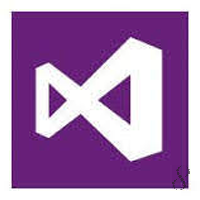Sources of RCT Problems
Issues Opening RCT Files
Microsoft Visual Studio Isn't There
When you double-click your RCT file, you may see a dialog box from your operating system stating that it "Cannot Open This File Type". When this happens, it is commonly due to Microsoft Visual Studio missing in - . The typical path of opening your RCT with a double-click won't work because - cannot make the program connection.
Tip: When another RCT application is installed, you can choose to open it by selecting "Show Apps" and using that program.
Wrong Version of Microsoft Visual Studio is Installed
Sometimes your installed version of Microsoft Visual Studio won't support your Visual Studio Resource Template file. Visit the Microsoft Corporation website to download (or purchase) the latest version of Microsoft Visual Studio. Most of the time your Visual Studio Resource Template file was created by a newer Microsoft Visual Studio than what you have installed.
Tip: If you right-click on your RCT file, then select "Properties" (Windows) or "Get Info" (Mac), you can obtain hints about what version you need.
Summary: In either case, the majority of problems opening RCT files are related to not having the correct software application installed on your computer.
Other RCT File Opening Causes
Even with the correct version of Microsoft Visual Studio installed, you can still experience difficulties opening RCTs. If you are continuing to have errors with loading RCT files, other external issues might be to blame. Other contributing causes:
- File references in the Windows Registry for RCT are wrong
- Corruption of the RCT file description inside the Registry
- Microsoft Visual Studio or another RCT application experienced a flawed installation
- Your RCT can't be loaded properly (file corruption)
- The RCT is infected with a virus
- Hardware related to RCTs has device driver corruption
- Windows has inadequate resources to open your Visual Studio Resource Template file
Quiz: Which operating system pioneered hierarchical file system (eg. file folders)?

That's Correct!
Multics was the first OS to support hierarchies of directories (eg. "Home" -> "Documents" -> "Work"). Nearly every modern operating system was heavily influenced by Multics.
Close, but not quite...
Multics was the first OS to support hierarchies of directories (eg. "Home" -> "Documents" -> "Work"). Nearly every modern operating system was heavily influenced by Multics.





















